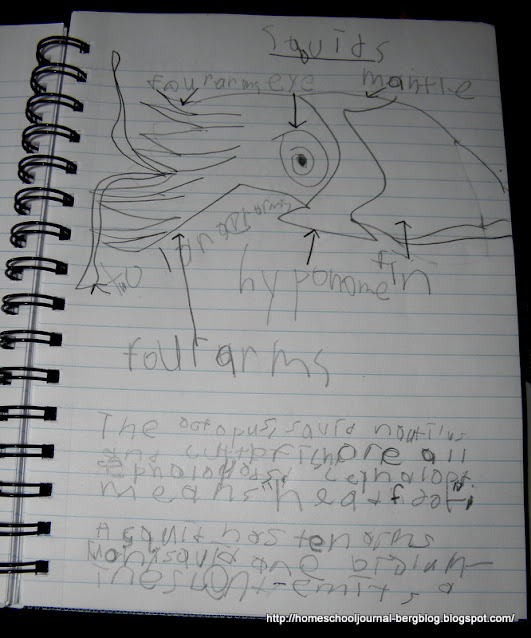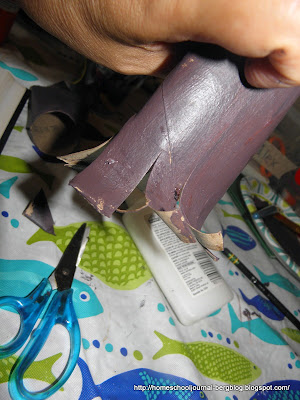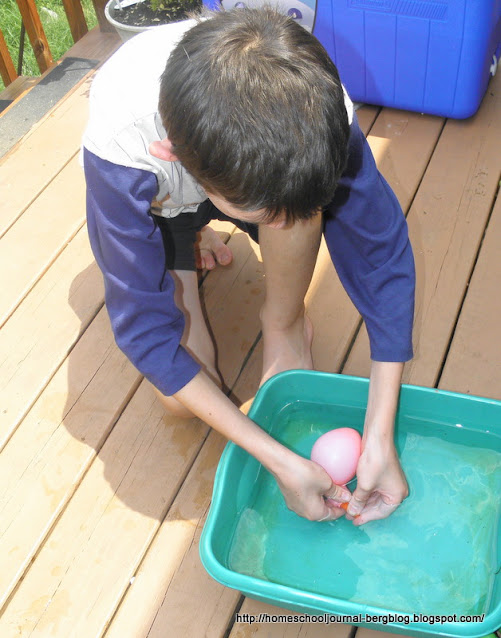Class Cephalopods: Squid and Octopus (Phylum Mollusks)
 |
| student's notebook page |
We have been learning about squids and octopuses. For my older students, I had them learn about the squid's anatomy by sketching and notebooking. The younger students made models instead out of toilet paper tubes.
For this project, you will need toilet paper tubes (or one paper towel tube cut in half). Paint them a squid color.
Take the first one and kind of pinch together the top of it and snip off both sides at an angle so that the cut off pieces look like triangles.
Take one of the snipped off triangles and attach it to the top to form a peak.This forms the fin at the end of the mantle. Save the other triangle.
Take the second tube and cut slits in it to make the eight arms. Curl them on a pencil.
Going back to the first tube, take a portion of a straw and attach it to the inside of the open end of the tube. This forms the hyponome, which enables the squid to send out a jet stream of water causing jet propulsion.
Now make a slit in the part of the other tube that is opposite to the arms. This will enable you to squeeze this tube into the same end of the first tube that has the hyponome straw in it.
Take two pieces of yarn, string or raffia (which is what we used) and attach the two triangles left over from the trim of the top of the tube earlier.
Attach the other two ends to the inside of the open end of the tube.
Add a large googly-eye to each side and you have a completed squid model.You can now point out all of the parts of the squid
To show how a squid propels itself through water, we used a balloon and a cap off a glue bottle.
Fill your balloon with either water or air and then slip the glue cap in the balloon's neck.
Then we placed the balloon in a tub of water on the deck and watched it go, simulating how the squid propels itself by taking in water and expelling it out it's hyponome.
For their notebooking pages, often it is easier for them to make a list of facts rather than write paragraphs.
The illustration shows its important features correctly. This one was made with pencil first and then colored with watercolor pencils and brushed over with water on a paint brush.
 |
| student's notebooking page "Octa" means eight. Octopuses have eight arms, with its large eyes and giant brain.
|
The illustration shows its important features correctly. This one was made with pencil first and then colored with watercolor pencils and brushed over with water on a paint brush.
sources and more inspiration:
Exploring Creation With Zoology 2: Swimming Creatures, Jeannie Fulbright
Toilet Paper Tube Squid at Almost Unschoolers
Water Propelled Squid at Almost Unschoolers
Octopus Colors at Adventures in Mommydom
Socktopuses at Pinterest
Demonstrating Octopus Propulsion with a Turkey Baster at Adventures in Mommydom
Octopus Soup at Pinterest
Octopus Dip at Pinterest














